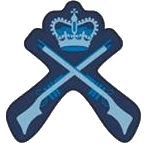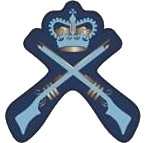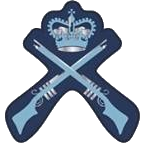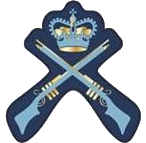About Us
- Flying
- Gliding
- Band
- Camps
- Communications
- Drill
- Duke of Edinburgh
- First Aid
- Shooting
- Sports
- Space
- Virtual Reality
- Drones
.jpg)
Aviation Training (Flying)
At the 10 Air Experience Flight School, RAF Woodvale, cadets have the opportunity to participate in flying training using the Grob Tutor aircraft. Transportation to the flight school is provided and flights are typically conducted with cadets from other local squadrons. During annual camps held over Easter or the summer, cadets may also have the opportunity to fly at a nearby Air Experience Flying school. There are also opportunities for cadets to fly on RAF transport aircraft or helicopters.
Aviation Training Package (Blue ATP) Blue WingsThe Blue ATP introduces cadets to aeronautical concepts including the primary and further effects of controls, lift vectors and airfield procedures.
Aviation Training Package (Bronze ATP) Bronze WingsFollowing on from the Blue ATP, there are 3 elements to this training to further develop aviation knowledge.

Blue

Bronze
Flying Scholarships
Air Cadets Pilot Navigation Training Scheme (ACPNTS) Silver WingsThe Silver ACPNTS provides 8 hours of flying training at an Air Experience Flight (AEF). There are 2 elements to this training.

Silver
Air Cadets Air Experience Flight Course (ACAEFC) Gold Wings
The Gold ACPS provides 12 hours of flying training in a single engine piston aircraft. Minimum age of 16 years for ACPS.
The Gold ACAEFC course provides 10 hours of flying training at an RAF Air Experience Flight (AEF). Minimum age of 18 years for ACAEFC.

Gold
Flying Gallery...
.jpg)
Aviation Training (Gliding)
At 635 Squadron Volunteer Gliding Squadron (VGS), RAF Topcliffe in Thirsk, cadets have the opportunity to participate in gliding training using the Vigilant motor glider. Groups of four new cadets to the Squadron are typically sent to the gliding school for their first visit, known as the Gliding Induction Course (GIC). Cadets are eligible to participate in the GIC starting at the age of 13. Cadets and staff may also go gliding in the Viking aircraft. This glider uses the winch launch which is a method of launching a glider into the air using a cable attached to a winch, which is typically mounted on a trailer or a vehicle. The glider is attached to the cable and the winch is used to rapidly reel in the cable, pulling the glider into the air. The winch launch allows gliders to reach altitudes of several thousand feet, from which they can then utilize thermals, or rising columns of air, to gain altitude and stay aloft for extended periods of time.
Aviation Training Package (Blue ATP) Blue WingsThe Blue ATP introduces cadets to aeronautical concepts including the primary and further effects of controls, lift vectors and airfield procedures.
Aviation Training Package (Bronze ATP) Bronze WingsFollowing on from the Blue ATP, there are 3 elements to this training to further develop aviation knowledge.

Blue

Bronze
Gliding Scholarships
Gliding Scholarship (SGS) Silver WingsThe Silver SGS provides the opportunity to fly a glider to solo standard. There are 4 elements to the training.
Gliding Training (GWGT) Gold WingsThe Gold GWGT is divided into 2 elements. Must be a Flight Staff Cadet (FSC) appointed to a VGS.

Silver

Gold
Gliding Gallery...
.jpg)
Squadron Band
The Squadron Band, consisting of drum and trumpet players, regularly performs in local events such as the Remembrance Day Parade in Little Hulton and the surrounding area. Regular practice is encouraged, and those who do so will have the opportunity to take a badge test to demonstrate their skills.
BTEC
From October 2010 the squadron offered the opportunity for band members, to register for the BTEC Level 2 in Music for Practical Performance. This is administrated by the Cadet Vocational Qualifications Office. Those cadets who pass their badge test and gain Leading Cadet and above and who are in year 11 and under 18 who wish to engage in some extra course work can apply to register. There are two work books and some work will be required outside of cadet normal activity.
Badges
Musician Blue BadgeThe blue badge is awarded on the basis of musical ability.
Drummer

Trumpeter

Musician

Piper

SQN Ensemble 🔊 🥁📯🎺
-
Seven Nation Army (Guitar)
Eddie Ate Dynamite, Good Bye Eddie (EADGBE) (5th string - B)
7 7 10 7 5 3 2 (Frets x12)
7 7 10 7 5 3 5 3 2
Fanfare 🔊 🥁📯🎺
-
Fanfare Competition
Wing Band Tunes 🔊 🥁📯🎺🔔
-
Men of Harlech - Bells
-
Dambusters - Bells
-
Great Escape - Bells
-
Gary Owen - Bells
SQN Band Tunes 🔊 Drum 🥁
-
Intro - 3x3x7
-
Chops
-
Sticks
-
Trench
-
Soldier
-
Hoover
-
Offbeat
-
Ernie
-
Spider
-
Abswing / Abkick Drum Solo
-
Highland (Snare)
-
Highland (Bass)
-
1 Min Super Solo (Spins, Tricks & Juggles Tempo @ End) // Solo 2 = Spider Mix
SQN Band Tunes 🔊 Bugle 📯 Trumpet 🎺
-
Saints
-
Georgia
-
Huntsman
-
Abswing
-
Abkick
-
Fanfare
-
Major
-
Hoover
-
General Salute
-
Marching
-
Number 1
-
Pooki
-
Albion
-
Last Post & Rouse
SQN Band Tunes 🔊 Glockenspiel (Bells) 🔔
-
Chops - Bells
CCC DDD C CCC EEE C CCC FFF C EEE C DDD C (x3)
C CCC C DBC
CCC CCC E BDBD (x3)
C CCC C DBC
-
Sticks - Bells
CCC D E C CCC E D C CCC D E C
C CCC C DBC
-
Wonderwall - Oasis
BA GAGAGAA GAGAGA BG
BA GAGAGAA GAGAGA BG
BDBDDE DBGAAABG EEGE
-
Harry Potter - Hedwig
E A C B A E D B A C B G# A# E
E A C B A E G F# F C# F E D# D# C A C
E C E C F E D# B C E D# D# E E C
E C E C G F# F C# F E D# D# C A
-
Pirates of the Caribbean
A C D D D E F F F G E E D C C D
A C D D D E F F F G E E D C D
A C D D D F G G G A B B A G A D
D E F F G A D D F E E F D E
A C E E D C# D
-
Für Elise - Beethoven
E D# E D# E B D C A
C E A B E A B C
E D# E D# E B D C A
C E A B E C B A
B C D E G F E D E E D C E D C E
E D# E D# E E D C A
C E A B E A B C
E D# E D# E B D C A
C E A B E C B A
-
Sugar Plum Fairy
G E G F# D# E D D D C# C# C# C C C B E C E B E D C B
A# G E G F# C B G G G F# F# F# E E E D# F# E F# D B A G F#
E G E G F# D# E D D D C# C# C# C C C B E C E B G F# E D
C# E C#E D# B D B D C# A C A C B B D# F# B E
-
Believer - Imagine Dragons
A# FD# D# C# D# D# FD# C# A# G#
A# FD# D# C# D# D# FD# C# A# G#
A# FD# D# C# D# D# FD# C# A# G# A# C# ^A# A
-
Super Mario
E E E C E G -G
C -G -E -A -B -A# -A -G E G A F G E C D -B (x2)
G F# F D# E -G# -A C -A C D
G F# F D# E +C +C +C
G F# F D# E -G# -A C -A C D D# D C
C C C C D E C -A -G C C C C D E C C C C D E C -A -G E E E C E G -G
C -G -E -A -B -A# -A -G E G A F G E C D -B (x2)
-
Snoop Dog
D#D# FF F#
A# A#G#A# G#F#G# G#F#D#F#D#
A# A#G#A# G#F#G# G#F#D#F#D#
-
The Intro - XX
AAAA CCCC DDDD EEEE CCG
AAAA CCCC DDDD EEEE CCG
AA CC DD CC A CC DD CC
AA CC EE CC DD CC EE CC A A A A
-
Jingle Bells
EEE EEE EG CDE
FFFFF EEEEE DDEDG
-
Twinkle Twinkle Little Star
C C G G A A G
F F E E D D C
G G F F E E D
G G F F E E D
C C G G A A G
F F E E D D C
-
Game of Thrones
GC D# FGC D# FGC D# FGC
EFGCEFGCEFGCEFGCEFGCEFGC
D# FGC D# FD
-
Baby Shark
AB DDDDDDDD
AB DDDDDDDD
AB DDDDDDDD DD C#
-
Imperial March
G G G Eb Bb G Eb Bb G D D D Eb Bb Gb Eb Bb G
G G G G F# F E D# E G# C# C B Bb A Bb Eb Gb Eb Gb Bb G Bb D
G G G G F# F E D# E G# C# C B Bb A Bb Eb Gb Eb Bb G Eb Bb G
-
Star Wars
D D D G D C B A G D C B A G D C B C A D D G D
C B A G D C B A G D C B C A D D E E C B A G
G A B A E F# D D E E C B A G D A D D E E C B A G
G A B A C F# D D G F Eb D C Bb A G D D D D G D C B A G D
C B A G D C B C A D D G D C B A G D C B A G G G G G
-
Drunken Sailor
BBBBBBBEGB AAAAAAADF#A BBBBBBB C# D E
DBAF#EE BBBBEGB AAAAD F# A BBBB C# D E
DBA F# E E
-
Old Macdonald
CCCGAAGEEDDC GCCCGAAGEEDDC
GGCCCGGCCC CCCCCCCCCCCCCGAAGEEDDC
-
Rudolph the red-nosed Reindeer
E F# G D C F# D B E C A E D G E C F# D B E C A E D
B B B B E E F# G G G F# E D D E D B G E D D E D E D G F#
C D C A F# E D D E D ED E B D E D B G E D D E D E D G
F# C D C A F# E D D E D E D A G E E G E D B D C E D C
B A B D E F# F# F# G G F# E D C A D E D B G E D
D E D E D G F# C D C A F# E D D E D E D A G
-
Mission Impossible
G G B C G G F F# (x3)
BGD BGD BGC BC
BGF# BGF BGE ED
ECG ECF# ECF EF
BGF# BGF BGE ED
-
Seven Nation Army
E E G E D C B (x3)
E E G E D C EEEGEE
DEDEDEDEDEEEE EEEBEE EDE EEDEEEE EE BBAAGF#E
E E E D# D# E
-
We Will Rock You / Take On Me / Final Countdown
SOON!
-
We wish you a Merry Christmas
D G G A G F# E E E A A B A G F# D D
B B C B A G E D D E A F# G D G G G F# F#
G F# E D D B A G D D D D E A F# G
-
Let It Snow!
C C C C Bb A G F C C C
G F G F E C D D D C C Bb A
G E D C C Bb A A G
F C C F E F G A G E C
G E G F F E D C D
E E F G A G E C G
C B A B A B C
-
God Rest You Merry Gentlemen
D D A A G F E D C D E F G
A D D A A G F E D C
D E F G A A Bb G A Bb
C D A G F D E F G F G
A Bb A A G F E D F E D
G F G A Bb C D A G F E D
-
Silent Night
G A G E G A G E D D B C C G
A A C B A G A G E A A C B A G A G E
D D F D B C E C G E G F E C
-
Deck The Halls
G F E D C D E C
D E F D E D C B C
D E F D E F G D
E F# G A B C B A G
G F E D C D E C
A A A A G F E D C
-
Santa Clause is coming to town
G E F G G G A B C C C E F G G G A G F F E G C E
D F B C G C C D C B C A A C D C B C
A D E D C# D B B B B C D C B A G F E D
-
Happy and you know it
C C F F F F F F E F G C C
G G G G G G F G A A A
Bb Bb Bb Bb D D Bb Bb A A A G F F F A
G G G F E E D E F
-
Heads, Shoulders, Knees & Toes
G A G F# G E G G G
G A G F# G D G G G F E D
C E G C D C B C A
B B G A B C C C C
-
Five Little Ducks
D D D D F# A A F# D
E E E E F# E C# A
D D D D F# A F# D D
E E A C# C# D D D
-
Five Little Monkeys
C A A G A C C A A G
C A G A E D C C
C C A A G G A A C A G
C A G A E E D D C
-
You Are My Sunshine
A D E F# F# F# E F# D D D E F#
C B B A G F# D E F# G B
B A G F# D D E F# G E E F#
D A D E D D
-
Frère Jacques
C D E C C D E C
E F G E F G
G A G F E C G A G F E C
C G C C G C
-
Rain, Rain, Go Away!
G E G G E G G E A G G E
F D F F D G F E D E C C
-
Baa, Baa, Black Sheep
C C G G A A A A G
F F E E D D C
G G G F F F E E E D D
G G G F F F F E E E D
C C G G A A A A G
F F E E D D C
-
Row, Row, Row Your Boat
C C C D E E D E F G
C C C G G G E E E
C C C G F E D C
-
Hot Cross Buns
E D C E D C
C C C C D D D D E D C
-
Happy Birthday
G G A G C B
G G A G D C
G G G E C B A
F F E C D C
-
Mary Had a Little Lamb
E D C D E E E E D D D E G G
E D C D E E E E E D D E D C
-
Wheels on the Bus
C F F F F A C A F
G E C C A F C F F F F A
C A F G C C F
-
When The Saints Go Marching In
C E F G G C E F G G
C E F G E C E D
D E E D C C E G G G
F F E F G E C D C C
-
Wavin' Flag (World Cup)
E -C +D +E -C C +G -F -E -D E -C +D +E -C (x2)
EDEDCA-A A +C -A -G EE +GG DDEDC CCC +E+G+A AAAAAG-E-D
CCC +E +G +A A A A A A G -E -D E E D C
CCDEDCFFFEDD DEEDCBDDEDCBC CCDEDCFFFEDD
DEEDCBDDEDCBC CDCBCCDCBCCDCBC EDEDC -A A +C -A -G EE +G G
DDEDC CCC +E+G+A AAAAAG-E-D CCC +E+G+A AAAAAG -E -DEEDC
CCDEDCFFFEDD DEEDCBDDEDCBC CCDEDCFFFEDD DEEDCBDDEDCBC CDCBCCDCBCCDCBC
-
Match of the Day
GCE +G EEEEE F +G E D E F
GBD F DDDDD E F D C D E
GCE +G EEEEE FG EFGAABCCBAC
GGEGGFDC
-
Fireflies - Owl City
GGDDDCDG GAA-GA^C^D ^EDCGGG^CC-A GDDDCG GAAGA^C^D GG^ED ^CGGG^EDAC EDCGEDC-D
.GC-.B.A.G.B-A .GAA.CCE.D-C .GG-ACDA-G .GA-CCE.D-C.GC-D G^DDC^DGC GAAGA^C^D G^EDDCG^E
^DCAG G^DD^DCG GAAG-A^CD GG^EDD ^CGGG^EDAC GGA^C-^C^DEDC-GC-D G^EDC^G^E-^DC-D G.C-.B.A.G.B-A
GAA^C^CEC^C^EDC-GA GG-AAC^D-A G^EC^DGA^C G^D^DC^DG-^D-^E-^C GCDCGG^ED ^C-BAGB-A GAACCE^CD-A GG-AAC^DA
G^EC^DG^D-A GAC^CE^D-CGC^D G^EDC^DG^E-^DC G^D^DC^DG G^EDC^DG^E-^DC GAC^CE^D-CGC^D G^EDC^DG^E-^DC G^D^DC^DG-^D-^CG^D G^D^DCG GAA-GA^C^D GG^EDCG ^EDDC-A
Prompts 🔊 Mixed Riffs 🎤🎼🎻🎹🎵🎸🤘
-
Sailor
-
Vader
-
Rock
-
Glory
-
Patriot
-
Chariot
-
Jungle
-
Downtown
-
Maverick
-
Castle
-
Stronghold
-
Fortress (Coming Soon)
-
Can Can
-
Distance
-
Jeans
-
Snow
-
Fox
-
Boston
-
Halo
-
Hanna
-
Reef
-
Wellerman
-
Wellerman (Bass)
-
Ark
-
Storm
-
Football
-
Simpsons
-
Saucer
-
Holiday
-
Britannia
-
Run
-
Dust
-
Solo
-
Town
-
Farmer
-
Mario
-
Mexico
-
Mongolia
-
Pirate
-
Prodigy
-
Rally
-
England
-
Honda
-
Scotland
-
Nation
-
Rocky
-
Horn
-
Worsley
-
La Vista
-
Thrones
-
Rings
-
Road
-
Betty
Awarded for Wing musical representation, having achieved Blue Musician Badge.
Awarded for Regional musical representation, having achieved Blue or Bronze Musician Badge.
Awarded for National music representation, having achieved Blue, Bronze or Silver Musician Badge.
For National Piper complete an ACF Annual Pipes and Drums Concentration and performance at Inverness and Dingwall.
Band Gallery...
Annual Camps
Cadets have the opportunity to attend annual camps at various RAF stations throughout the year, including Easter, summer, and autumn camps. These camps provide cadets with the opportunity to gain work experience, participate in activities such as flying, shooting, leadership development, and sports, and experience living away from home for a week.
Oversea Camps
Senior cadets may have the opportunity to attend overseas camps in locations such as Gibraltar, Cyprus, and Germany.
Weekend Camps
The Squadron also holds weekend camps at various locations, including RAF Cosford and Shawbury, which may include sports leaders courses, shooting weekends, and leadership development courses.
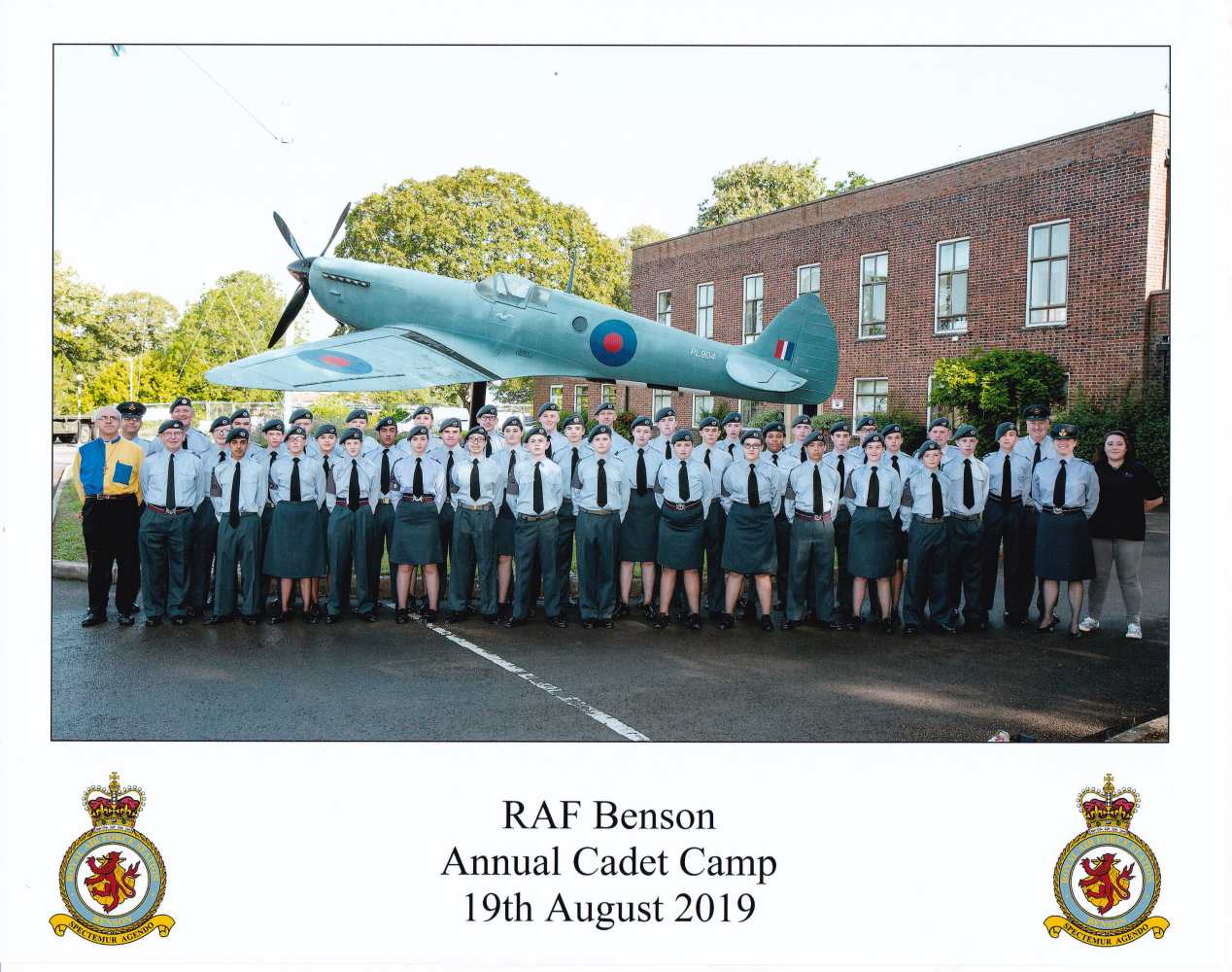
Annual Camp
.jpg)
Oversea Camp
.jpg)
Weekend Camp
Camps Gallery...
.jpg)
Communications
New cadets begin learning about communications procedures and the phonetic alphabet as part of their basic training.
Basic Radio Operator & Cyber Awarness
The Blue badge program introduces cadets to the proper use of a radio for administrative duties and small exercises, and includes a requirement to watch an introduction to cyber security video covering topics such as online footprints, texting, sexting, and cyberbullying.

Blue
Radio Specialist
Radio Operator Bronze BadgeHaving achieved the Basic Radio Operator and Cyber Awareness Blue Badge, the aim is to give a cadet the skills required to be a radio operator for a flight of cadets during an exercise.
Radio Communications Silver BadgeFollowing on from the Radio Operator Bronze Badge, the following training aims to develop the skills required to run a network control station during a radio led exercise and further develop communication skills.
Radio Communications Specialist Gold BadgeThis training aims to develop the skills required to build a complete radio station, either in a building or in the field. There are two modules within this training: Technical Skills and Radio Deployment.

Bronze

Silver

Gold
Cyber Specialist
Cyber Foundation Bronze BadgeThis training aims to develop the skills and knowledge required to understand and protect oneself from the dangers inherent in modern information and communication technology.
Cyber Specialist Silver BadgeThis training aims to develop the skills required to creatively use information and communication technology in a responsible, competent and confident way.
Advanced Cyber Specialist Gold BadgeThis training aims to develop the skills required to protect networks from intrusion and test those networks using Penetration Testing techniques.

Bronze

Silver

Gold
Drill
Drill training is a regular part of the cadet program, especially for new cadets. More experienced cadets also have the opportunity to practice continuity drill, which involves performing drill movements without verbal commands.
Drill Competitions
Each year we pick a team from the squadron and train them for the Wing Drill Competition.
Squadron Flights compete annually for the Inter-Flight Drill Trophies. There are three categories to this competition:
- Best Drill Flight
- Best Uniform Inspection
- Best NCO I/C Flight
.jpg)
Winners - B Flight
.jpg)
Runners Up - A Flight
Inter-Flight Drill Competition 2019
-
2022 Drill Sequence Complete
-
Drill Part 1 (Ceremonial Intro)
-
Drill Part 2 (Ceremonial Flight Commander)
-
Drill Part 2 (Ceremonial Flight Commander 2)
-
Drill Part 2 (Ceremonial Flight Commander 3)
-
Drill Part 3 (Instructional Drill)
-
Drill Part 3 (Instructional Drill 2)
Road Marching
Road Marching Bronze BadgeThe Bronze Road Marching Badge is awarded for completing 2 days of road marching at recognised events.
Road Marching Silver BadgeAwarded for completing 4 days of road marching at recognised events.
Road Marching Gold Badge - NijmegenAwarded for completing 2 days of road marching at a qualifying event and 4 days of road marching during the Nijmegen International 4-Day Marches.

Bronze

Silver

Gold
Drill Gallery...
.jpg)
Duke of Edinburgh Award Scheme
The Duke of Edinburgh's Award program is divided into three levels: Bronze, Silver, and Gold. These levels differ in terms of the minimum time required to complete the program, the level of difficulty, and the minimum age to start. Successful completion of any of these levels leads to the corresponding award.
There are several elements to the Duke of Edinburgh Award Scheme:
- Volunteering
- Skill
- Physical
- Expedition
- Residential Project (Gold only)
To find out what is required to achieve a Bronze, Silver and Gold Duke of Edinburgh Awards...
Duke of Edinburgh Award Badges
This is includes the ACO Pre-Duke of Edinburgh Award Blue Badge. This is an Air Cadet award that can be completed by those cadets who are not yet old enough to start the Duke of Edinburgh Bronze Award.

ACO Award

Bronze Award

Silver Award

Gold Award
Duke of Edinburgh Gold Award Presentation
We have attended St. James Palace in London and the Palace of Holyroodhouse in Edinburgh for several years, as cadets gain their Gold Duke of Edinburgh Award.
Duke of Edinburgh Gold Award Presentations...
First Aid
.jpg)
First aid training is provided to cadets at all levels throughout their time in the squadron. Upon joining the squadron, cadets typically complete a Heart Start Course, which is a brief introduction to first aid techniques. This may be followed by further first aid training at a later stage.
Heartstart Blue BadgeThe blue Hearstart badge is the introduction to First Aid in the Air Cadet Organisation. The award is an initiative coordinated by the British Heart Foundation (BHF) to promote and develop Emergency Life Support.
Youth First Aid Bronze BadgeThe aim of this award is to provide enhanced first aid training. The qualification is valid for 3 years.
Activity First Aid Silver BadgeThe aim of this award is to provide comprehensive first aid training. A Cadet with Method of Instruction qualification can teach and assess Youth First Aid Bronze Badge. The qualification is valid for 3 years.
Instructor First Aid Gold BadgeThis award is gained by passing a weeks training course at regional level to become an assessor for Activity First Aid Silver Badge. The cadet will be a minimum age of 16 years. An Instructor Cadet who has achieved an Activity First Aid Silver Badge.
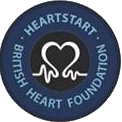
Heartstart
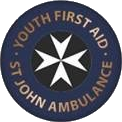
Youth
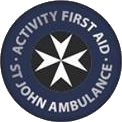
Activity
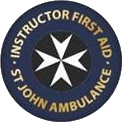
Instructor
Shooting
All Staff who participate in shooting training, coaching or who act as weapon handling instructors, are extremely well qualified to the highest standards. Any parents or guardians who are concerned, about weapon training are welcome to visit the squadron for any further information.
Cadets are tested regularly on each rifle they handle, before they are allowed to fire live on a range. There is extensive classroom work and practice before we take them to the range.
The introductory rifle that most cadets start to train on, is the L144 .22 and is a single shot, manual feed rifle.
The Squadron has two .177 air rifles, to allow a more basic introduction and is part of the Progressive Training Syllabus.
The cadets then progress to the L98-A2 rifle, which is based on the military SA80. The difference between the two, is that the SA80 is an automatic rifle, while the L98 is a semi-automatic rifle.
Firing from ranges of 10m - 300m, the cadets aim to attain the various marksmanship levels. To earn this requires a great deal of marksmanship training. Training is extensive and it takes time to achieve this standard at shooting.
.jpg)
Air Rifle
.jpg)
L144 Rifle
.jpg)
L98-A2 Rifle
Shooting Badges
Trained Shot BadgeThis indicates a cadet has become competent in safely handling and firing a weapon.
Air Rifle

Small Bore

Service

Target

This encourages participation in shooting and progression through the Live Fire Lessons.
This encourages further participation in shooting to develop a higher level of marksmanship.
This provides a further challenge through participation in National shooting competitions. Cadets who participate in competitions, having successfully completed the required Live Fire Lessons on the weapon system, will be eligible for the Competition Marksman Badge.
Shooting Gallery...
Sports
The Squadron has a busy sports programme. We compete against 36 other squadrons in Greater Manchester Wing in the following sports:
Athletics, 5-a-side football, volleyball, swimming, cross country, table tennis, hockey, rugby and netball.
If you are a talented sports person, then you could go on to represent Greater Manchester Wing in the North Regional competitions.
If you are even more gifted, you could find yourself representing North Region, in the National Championships and if you are outstanding you could represent, the Air Training Corps against the Army Cadet Force and the Sea Cadet Force.
At each level from wing representation you will earn a Certificate and Badge, known as Wing, Regional and Corps Blue. Back down to earth, the two flights on the squadron also compete at the various sporting activities.
.jpg)
Athletics Team
.jpg)
Cross Country Team
.jpg)
Volleyball Team
Swimming
In addition to the swimming competitions, held at the various levels, there are swimming awards. These are in three categories:
- Basic
- Intermediate
- Advanced
They are completed through-out the year given the opportunity.
.jpg)
Swimming
Sports Leaders Awards
As a Squadron, we run our own Sports Leaders Courses. From September 2010 new courses were introduced and some courses were re-named. They are now presented in a different format in order to qualify for the Qualification and Credit Framework (QCF). We offer the following awards:
- Level 1 Award in Sports Leadership
- Level 2 Award in Sports Leadership
- Level 2 Community Sports Leaders Award
We can also offer the Level 3 Higher Sports Leaders Award, for those who must be over 18 to qualify. Although candidates can start the course from 16 as long as they are holders of the Level 2 Community Award. These awards could help you to get a part time job, as a leisure centre assistant if you want a career in sports. They also allow you to safely run a sports session for new or younger cadets. You will receive a certificate on completion of this course.
.jpg)
Sports Leaders
Sport Gallery...
Space
The Royal Air Force Air Cadets (RAFAC) Training Team and the Open University (OU) are working together to further develop the OpenLearn space syllabus into the RAFAC Space Syllabus. Currently, the Blue and Bronze Awards are available.
Both awards are presented in an e-learning format with accompanying materials and instructor guides. They can be completed independently, in a small group, or the content can be delivered by an instructor.
It is possible to earn a BTEC Level 2 Certificate in Space Studies.
The Blue Space Award is the first module of the RAFAC Space Syllabus, titled 'The Applications of Space Technology.' It covers the following topics:
- The layers of the atmosphere
- The benefits of space exploration for life on Earth
- Types of satellites and their uses
To be eligible for this course, it is recommended that cadets be at least ATC First Class Cadets or CCF Proficiency Part 1. There is no age restriction for taking this course
The Bronze Space Award consists of two modules, both of which must be completed to earn the Bronze Space certificate. The first module is titled 'Exploring Space' and covers the following topics:
- The history of rocket development
- How different types of rocket engines work
- The contents of Earth's space environment
- Options for clearing space debris
- The achievements of space pioneers
The second module is titled 'The Moon: Our Nearest Neighbor' and covers the following topics:
- The influence of the moon on Earth
- The lunar cycle
- Experiments conducted on the moon
- The potential for establishing a permanent colony on the moon
The Silver Space Award is currently being developed by the HQ RAFAC Training Team and the Open University, with a planned release in 2023. It will consist of two modules:
- Planetary Landscapes
- Life on Mars
Virtual Reality
Cadets have the opportunity to pilot all kinds of aircraft and learn various STEM skills using VR simulators such as VTOL VR, Microsoft Flight Simulator, X-Plane, Kerbal Space Program, Elite Dangerous VR, Space Engine, Universe Sandbox, Space Engineers, and more.
We can host multiple people in virtual reality scenarios, including flying missions, air traffic control, space command, and satellite communications. Participants can fly together in joint missions, transport cargo in aircraft, practice air-to-air refueling, or even compete in aerial dogfights against other cadets and staff from all over the UK. Do you have the skills and determination to become our top pilot?
The next generation of training will utilize haptic technology. Some virtual reality systems incorporate haptic feedback, which allows cadets to feel the sensation of touching or manipulating objects within the virtual environment. This can enhance the realism of the learning experience and help cadets develop their hand-eye coordination and other skills. Users can feel the forces the pilot is experiencing in the air.
Drones are currently a hot topic and there will be more information available soon. Virtual reality can be used to give cadets a sense of what it's like to operate a remote controlled drone and see the world from its perspective.
Virtual reality provides RAFAC with a powerful tool for delivering immersive, interactive, and engaging learning experiences that can help young people develop their skills and knowledge in a range of areas related to aviation and space.
Drones
Drones over 500g come with strict rules you must follow in order to keep everyone safe. At squadron we are experimenting with building our own lightweight drones (under 500g) and programming them to fly together to perform minature light shows. This DIY project ties in to many STEM skills such as engineering and coding.
In the UK, drones are regulated by the Civil Aviation Authority (CAA). The CAA has issued guidelines for flying drones, known as the "Drone Code." The Drone Code includes the following rules:
- The drone pilot is the person responsible for flying safely. You could be fined for breaking the law when flying your drone or model aircraft. In the most serious cases, you could be sent to prison.
- Always keep your drone or model aircraft in direct sight and make sure you have a full view of the surrounding airspace.
- Fly below 120m (400ft)
- Do not fly closer to people than 50m
- Never fly over people who are crowded together
- Keep at least 150m away from residential, recreational, commercial and industrial sites
- Stay well away from airports, airfields, spaceports and aircraft
- Follow any flying restrictions and check for hazards
- Get the right authorisation before flying outside this code
- Make sure you know what your drone or model aircraft can and cannot do
- Make sure your drone or model aircraft is fit to fly + Check fuel and battery levels
- Never drop, lower or fire anything from your drone or model aircraft while it’s flying
- Never carry any dangerous cargo on your drone or model aircraft
- Make sure any equipment is secure
- Do not fly if the weather could affect your flight
- Make sure you’re fit and safe to fly
- Take action quickly and safely if the situation in the air or on the ground changes
- Report any dangerous incidents, near misses or suspicious activity
- Make sure you have the appropriate insurance
- Respect other people and their privacy
- Make sure you know what your camera can do and the kind of images it can take
- Make sure you can be clearly seen when you’re out flying
- Let people know before you start recording or taking pictures
- Think before sharing photos and videos
- Keep photos and videos secure
- You must pass the CAA’s official online theory test to get a flyer ID
- You must pass the theory test to renew your flyer ID every five years
- Always fly safely and legally




















